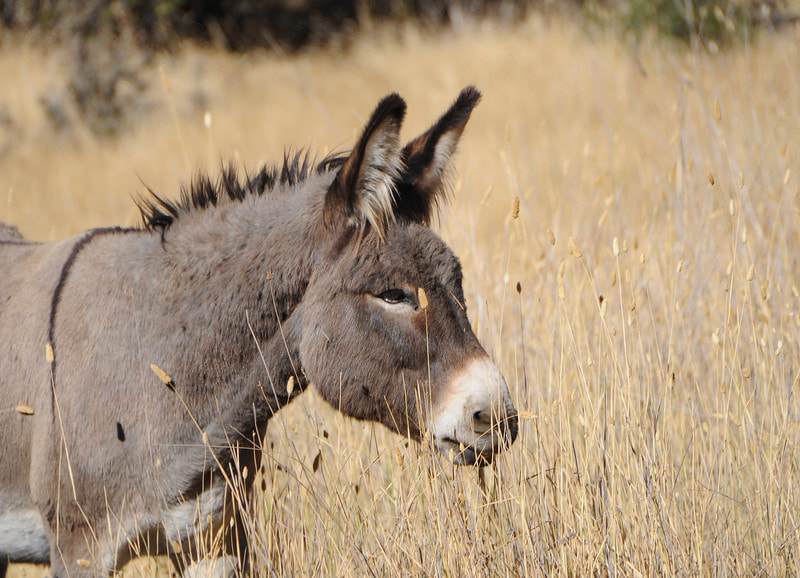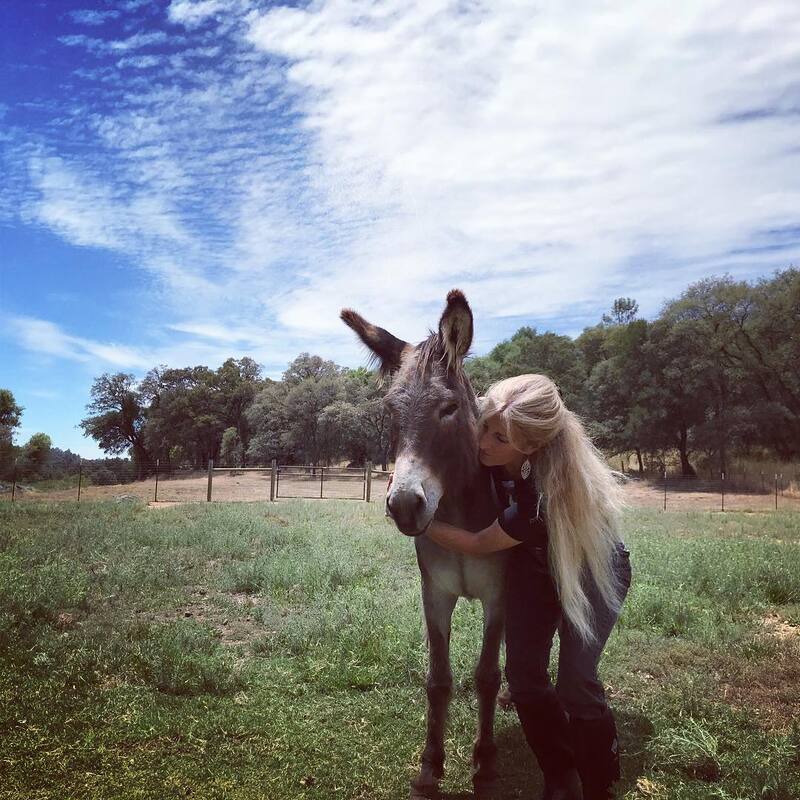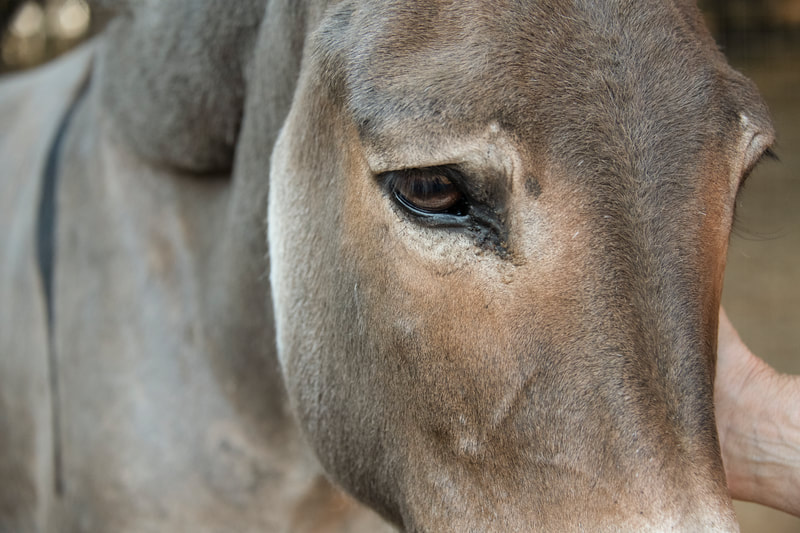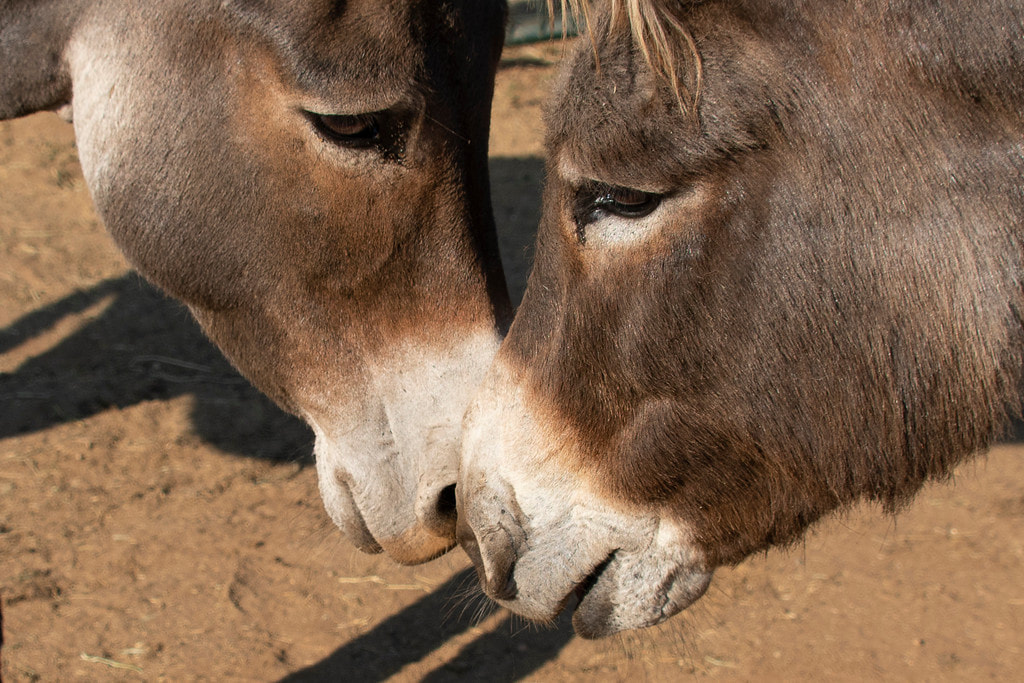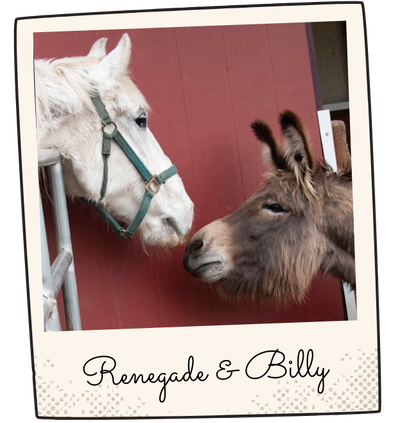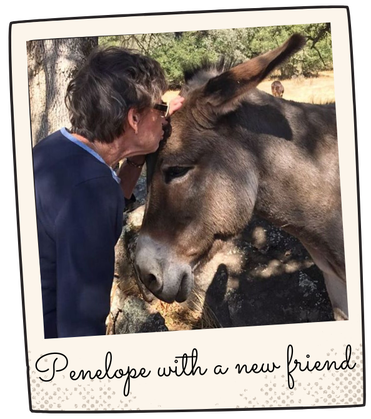Rescued Donkeys
|
Sponsor Monthly! Donate Now! |
For more information on CAPE's Burro Rescue Program, go HERE! |
Burro Rescue programWorking closely with the American Wild Horse Preservation Campaign (AWHPC) and the Platero Project, the CAPE Animal Sanctuary is now the forever home to 7 rescued burros and donkeys.
Please consider donating to the cost of daily care, high quality hay, supplements, hoof care, and more! |
Sponsor Billy!
A team of CAPE volunteers traveled to Nevada in March of 2014 to rescue Billy, a burro who was found abandoned in the Nevada desert. He was transported to CAPE Animal Sanctuary immediately and has thrived in his beautiful forever home for the past five years.
Billy is friendly, funny and sweet. You also haven’t met stubborn until you’ve met Billy- - often being the leader of mischief with his friends Pip and Penny. He has won the hearts of everyone who has met him. Billy is estimated to be 23 years old.
Billy is friendly, funny and sweet. You also haven’t met stubborn until you’ve met Billy- - often being the leader of mischief with his friends Pip and Penny. He has won the hearts of everyone who has met him. Billy is estimated to be 23 years old.
|
|
|
Sponsor Penny!
Penelope’s life before being rescued by CAPE was one of major neglect and her body still carries reminders of her previous life. Due to lack of proper nutrition, she has extreme fat pockets on her back. Her hooves were extremely deformed when she arrived at the CAPE Animal Sanctuary due to years of neglect.
But today, after months of trims and care, her hooves look in perfect position. Her eyes have a sadness that moves your soul. But her spirit tells a different story about resilience and trust. She’s gentle and sweet, loving and curious. Visitors are often found hugging her with her head in their arms. She’s deeply bonded with the rescued herd, especially Billy and Pip. And it is a true honor for us to have her in our care. Penny is estimated to be 28 year old.
Why does CAPE rescue donkeys and burros?
The Bureau of Land Management (BLM) chases wild horses and burros into holding pens using helicopters in order to use the land for cattle grazing. The burros are separated from their herd and many are injured during the round-ups.
• Wild horses and burros are confined in holding pens where they can linger for
years. Many end up going to slaughter if they are not adopted.
• In some parts of the world, donkeys are used as “beasts of burden” living lives of abusive service.
• Wild horses and burros are confined in holding pens where they can linger for
years. Many end up going to slaughter if they are not adopted.
• In some parts of the world, donkeys are used as “beasts of burden” living lives of abusive service.
What can you do to help end their suffering?
• You can help by adopting a plant-based diet. This will reduce the cattle industry’s impact on the public land that is home to wild horses and burros.
• Be aware of legislation that affects wild horses and burros. Voice your opinions to your legislators at every opportunity.
• An informative resource is The American Wild Horse Campaign
• Avoid any industries that use donkeys as “beasts of burden”.
• Be aware of legislation that affects wild horses and burros. Voice your opinions to your legislators at every opportunity.
• An informative resource is The American Wild Horse Campaign
• Avoid any industries that use donkeys as “beasts of burden”.
Interesting Facts About Burros and Donkeys:
• Burros and donkeys are typically the same animal. The main difference is that donkeys are domesticated and burros are usually wild.
• Burros and donkeys have a large number of facial muscles that express emotions, especially around their eyes and lips.
• Burros and donkeys have excellent memories and can remember places they have been to and other animals they have met .
• Burros and donkeys can hear another’s bray up to 60 miles away.
• Burros and donkeys are capable of independent thinking and decision making, especially regarding their safety.
• Burros and donkeys are social animals and need to be with a herd. If they get lonely, they can become depressed.
• Burros and donkeys have a large number of facial muscles that express emotions, especially around their eyes and lips.
• Burros and donkeys have excellent memories and can remember places they have been to and other animals they have met .
• Burros and donkeys can hear another’s bray up to 60 miles away.
• Burros and donkeys are capable of independent thinking and decision making, especially regarding their safety.
• Burros and donkeys are social animals and need to be with a herd. If they get lonely, they can become depressed.
“"Never, never be afraid to do what's right, especially if the well-being of a person or animal is at stake. Society's punishments are small compared to the wounds we inflict on our soul when we look the other way."
~ Martin Luther King, Jr
CAPE Tax ID#77-0368527
Copyright © 2016 Center for Animal Protection & Education. All rights reserved.



